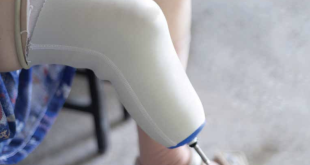Words by Dr Niran Maharjan
Plastic surgery revolutionizes cancer treatment: From tumor-free resection to complex wound closure, it’s reshaping patient outcomes.
The fear factor associated with the term “cancer” still has not decreased in the mindset of the general population as we can easily visualize the discomfort that completely covers the expression instantly on hearing the term. Medically, there has been a lot of advancement on the treatment modality and the treatment outcome, both of which have drastically improved while the search for better treatment modalities continues. Cancer, isn’t untreatable as of now in that the early diagnosis and treatment is the key factor that determines the outcome. With the association of the multidisciplinary team approach, the treatment outcome has changed drastically. These days improving the quality of patient life is the key concern rather than just focusing on the survival of the diseased person.
Restoring hope: Plastic surgery plays a pivotal role in cancer reconstruction, from defect closure to functional restoration.
The treatment modality has changed vastly with addition of plastic surgery in the multidisciplinary team as the newer approaches and techniques can be incorporated for getting the tumor free resection and closure of the complex wound is also possible and early wound closure leads to early onset of the chemotherapy and radiation therapy. Plastic surgery, though seems out of subject, has lately been included in the management team creating a huge impact on the outcome of cancer management. Today we shall discuss 3 important aspects where plastic surgery plays a key role in cancer management resection, reconstruction and palliation.
PLASTIC SURGERY IN RESECTION
Before the entry of plastic surgery, the nightmare of every surgeon dealing with the cancer patient was to achieve a tumor free margin. Some would fear not being able to close the defect thus created after resection and at times would leave the gross tumor intact and some had horrible experience in closing the defect. This not only made the treatment inadequate, repetition of the excision deemed almost always necessary thus prolonging the treatment time. Few, in between these procedures, would have noticed distant metastasis thus decreasing the patients survival rate. After the incorporation of the plastic surgery principle, the resection never needed to be compromised because the defect created after resection could be closed. This not only gave a higher rate of resection with tumor free margin but also led to early initiation of the sequential treatment modality. Wide resection with salvage of the functioning limb was also possible for those who otherwise in the initial days were posted for limb amputation. Thus, helping to improve the quality of life. The limbs that need to be amputated must be amputated but with the incorporation of the plastic surgery in the team, the closure of the stump has seen drastic modification. Following healing of the wound, wearing the prosthesis has become possible with least complications.
Enhancing quality of life: How plastic surgery offers palliative relief in advanced cancer cases, improving patient comfort and functionality.
PLASTIC SURGERY IN RECONSTRUCTION
No matter how complex the defect gets after resection, the closure is possible either by using the simpler maneuver or transporting distant tissue in the form of free flaps. The tumor free status along with the covered defect, not only helped in the survival of the cancer patient but could also initiate the adjuvant chemo- or radiotherapy early. Depending on the site and size of the defect, the donor site is chosen on the basis of least donor-site morbidity thus improving the quality of the life. Due to the plethora of reconstructive possibilities available today, a comprehensive description is impossible to deliver within the limited scope of this article. Not just covering the defect, but even the functional achievement of the organ or part is possible with reconstruction. Reconstruction of the shape of the body and its structure and functional reconstruction not only helps restore the lost confidence but also boosts up the self-confidence thus hugely improving the quality of life after the treatment.
PLASTIC SURGERY IN PALLIATION
In advanced cases, the neo-adjuvant and adjuvant therapy has improved the survival rates but the locally advanced tumor which has jeopardized the daily activities too can be made better by palliative resection. The disease-free status could never be achieved in these patients, but the quality of life could be improved in their limited life expectancies.
CONCLUSION
Plastic surgery with the inter-disciplinary concept can help in getting the tumor free margin resection of the diseased part and closure of even the complex kind of defects. Thus, initiating the adjuvant therapy early. Limb salvage and restoration of the body shape and function not just improves the quality of life but also helps boost the self-confidence of the patient.
 Medicosnext
Medicosnext




